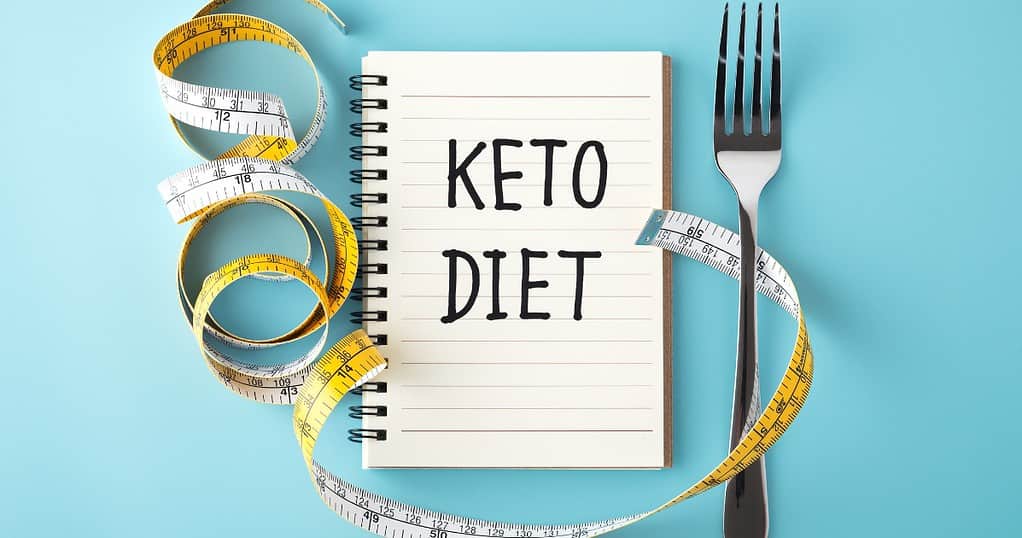Embarking on the Keto Diet journey can be a game-changer for your health and well-being. This comprehensive guide will help you navigate the world of low-carb living, and provide you with Keto tips to make the most out of this transformative lifestyle. Let’s dive in and explore what the Keto Diet is all about, and how it can benefit you.
Table of Contents
- Table of Contents
- 1. Introduction to the Keto Diet
- 2. A Brief History of the Keto Diet
- 3. The Science Behind the Keto Diet
- 4. Different Types of Ketogenic Diets
- 5. Benefits of the Keto Diet
- 6. Keto Diet Foods: What to Eat and What to Avoid
- 7. Debunking Common Keto Diet Myths
- 8. Keto Tips for Success
- 9. Potential Side Effects and Precautions
- 10. Real-Life Keto Diet Success Stories
- 11. Conclusion
1. Introduction to the Keto Diet
The Keto Diet, short for ketogenic diet, is an eating plan that focuses on consuming high amounts of healthy fats, moderate amounts of protein, and very few carbohydrates. The goal of this diet is to put your body into a state of ketosis, where it starts burning fat instead of carbs for energy. This metabolic state can lead to weight loss, improved mental clarity, and a host of other health benefits.
In a typical Keto Diet, your daily calorie intake should consist of:
- 60 to 75 percent from fat
- 15 to 30 percent from protein
- 5 to 10 percent from carbohydrates
By restricting carbohydrate intake, the body starts producing ketones, which are used as an alternative energy source. Ketosis is a natural process that occurs when our body lacks glucose, its primary fuel source derived from carbohydrates.
2. A Brief History of the Keto Diet

Although it may seem like a recent trend, the Keto Diet has been around since the 1920s. It was first introduced as a treatment for epilepsy to help reduce seizure frequency in patients. The diet’s therapeutic applications continue to be used in clinical settings, but its popularity has grown exponentially in recent years for weight loss and other health benefits.
3. The Science Behind the Keto Diet

Our bodies have two primary sources of energy: glucose (from carbohydrates) and ketones (from fats). When you limit your carbohydrate intake, your body experiences a decrease in blood glucose levels, leading to the production of ketones through a process called ketogenesis.
Ketones are water-soluble byproducts produced in the liver during the breakdown of fats. These molecules can be used by the body as a primary energy source when glucose is scarce. By consuming a diet high in fats and low in carbohydrates, you encourage your body to shift its metabolism towards fat utilization, which can result in weight loss and other health benefits.
4. Different Types of Ketogenic Diets

While the standard Keto Diet is the most popular, there are several variations that cater to specific goals and preferences:
- Cyclic Keto Diet: This version alternates between standard Keto Diet days and higher carb days, usually 1-2 days per week. This approach is often used by athletes to replenish glycogen stores in their muscles.
- Targeted Keto Diet: In this variation, you consume 25-50 grams of carbohydrates 30 minutes to an hour before workouts, providing an energy boost for high-intensity exercise.
- Vegan Keto Diet: This plant-based version of the Keto Diet relies on vegan sources of protein and fat, such as tofu, tempeh, nuts, and seeds.
- Lazy Keto: This approach focuses on limiting carb intake without tracking other macronutrients, making it less strict and more flexible.
It’s essential to choose the variation that best fits your lifestyle, goals, and personal preferences.
5. Benefits of the Keto Diet

The Keto Diet offers a range of health benefits, including:
- Weight Loss: Many people experience significant weight loss on the Keto Diet due to reduced calorie intake, increased satiety, and a shift in metabolism towards fat burning.
- Improved Blood Sugar Control: The Keto Diet has been shown to improve blood sugar and insulin levels in people with type 2 diabetes and even help some individuals reduce or eliminate their need for medication.
- Reduced Inflammation: A low-carb, high-fat diet like the Keto Diet may help reduce inflammation, which can alleviate symptoms of various chronic conditions, such as arthritis and ulcerative colitis.
- Enhanced Mental Clarity: Some people report increased mental focus and clarity on the Keto Diet due to stable blood sugar levels and the brain’s ability to utilize ketones for fuel.
- Potential Therapeutic Applications: Research is ongoing, but some studies suggest the Keto Diet may have positive effects on specific health conditions, including epilepsy, cancer, and neurological diseases.
6. Keto Diet Foods: What to Eat and What to Avoid

When following the Keto Diet, it’s essential to know which foods are allowed and which should be avoided:
Foods to Eat:
- Healthy fats: Olive oil, avocado, nuts, seeds, and coconut oil
- Protein: Grass-fed beef, chicken, fish, eggs, and dairy products
- Non-starchy vegetables: Leafy greens, broccoli, cauliflower, and zucchini
- Low-carb fruits: Berries, tomatoes, and avocados
Foods to Avoid:
- High-carb foods: Bread, pasta, rice, and potatoes
- Sugary foods: Candy, cakes, and sweetened beverages
- Starchy vegetables: Carrots, peas, and corn
- Legumes: Chickpeas, lentils, and beans
Remember, moderation is key, and it’s crucial to consume nutrient-dense foods that provide essential vitamins and minerals.
7. Debunking Common Keto Diet Myths

There are many misconceptions about the Keto Diet that can cause confusion and misunderstanding. Here are a few myths debunked:
- Myth: The Keto Diet is a high-protein diet: While protein is an essential component of the Keto Diet, it’s not the primary focus. The diet emphasizes healthy fats, with moderate protein intake.
- Myth: All fats are healthy on the Keto Diet: It’s crucial to choose healthy fats, such as those found in olive oil, avocados, and nuts, rather than unhealthy sources like processed foods and saturated fats.
- Myth: You can eat unlimited calories on the Keto Diet: Calories still matter on the Keto Diet, and overeating can lead to weight gain, even if you’re consuming mainly fats and proteins.
8. Keto Tips for Success

To maximize your results on the Keto Diet, follow these practical tips:
- Educate yourself: Learn about the Keto Diet and consult with a healthcare professional before starting.
- Plan your meals: Create a weekly meal plan and grocery list to stay organized and avoid temptations.
- Track your macros: Use a food diary or app to monitor your daily macronutrient intake.
- Stay hydrated: Drinking water is essential, especially during the initial stages of the Keto Diet, when you may experience the “keto flu.”
- Experiment with recipes: Explore new Keto-friendly recipes to keep your meals interesting and enjoyable.
- Be patient: It takes time for your body to adapt to ketosis, so give yourself time to adjust and see results.
9. Potential Side Effects and Precautions

While the Keto Diet can offer numerous benefits, it’s essential to be aware of potential side effects and precautions:
- Keto Flu: During the first few weeks, some people may experience flu-like symptoms, such as fatigue, headaches, and nausea. This is temporary and usually resolves as your body adapts to ketosis.
- Long-term health concerns: Prolonged adherence to the Keto Diet may have negative impacts on heart health, bone density, and digestive health. It’s crucial to consult with a healthcare professional to monitor your health and make adjustments as needed.
- Not suitable for everyone: The Keto Diet may not be appropriate for individuals with kidney or liver disease, pregnant women, or those with certain metabolic disorders. Always consult with a healthcare professional before starting any new diet plan.
10. Real-Life Keto Diet Success Stories

The Keto Diet has transformed the lives of many people, like Amy Levy from Los Angeles, who lost 24 pounds on the diet and experienced improvements in her inflammation-related symptoms. By following a well-formulated Keto Diet and implementing the tips and strategies outlined in this guide, you too can achieve success on your Keto journey.
11. Conclusion
In conclusion, the Keto Diet offers a unique approach to weight loss and overall health improvement. By understanding the science behind it, choosing the right foods, and following practical tips, you can unlock the power of low-carb living and enjoy the benefits of the Keto lifestyle. Remember to consult with a healthcare professional before starting, and embrace the journey towards a healthier, happier you.


